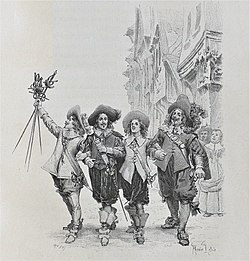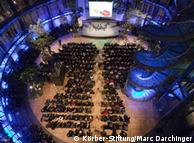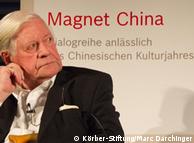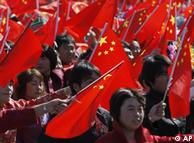「WWW」廿五歲了。
Mar 11, 2014
What the Internet of 2025 Might Look Like
Their responses speak of a world that is connected deep within homes and well beyond borders. Pew collected the answers into theses buckets of a hopeful and not-so hopeful future (with some other random ideas ginned up, too).
Pew posed an open-ended question asking for predictions about the role of the Internet in people’s lives in 2025, and what impact it will have on social, economic and political processes. “Good and/or bad, what do you expect to be the most significant overall impacts of our uses of the Internet on humanity between now and 2025?” Pew asked. The group polled researchers, entrepreneurs, writers, developers, advocates and others.
Here is a selection of responses plucked from the overview of “Digital Life in 2025.” You can see the entire report with more anecdotes on Pew’s site.
Invisible Information
David Clark, senior research scientist at MIT:“Devices will more and more have their own patterns of communication, their own ‘social networks,’ which they use to share and aggregate information, and undertake automatic control and activation. More and more, humans will be in a world in which decisions are being made by an active set of cooperating devices. The Internet (and computer-mediated communication in general) will become more pervasive but less explicit and visible. It will, to some extent, blend into the background of all we do.”The Potential of Wearables
Aron Roberts, software developer at the University of California, Berkeley:“We may well see wearable devices and/or home and workplace sensors that can help us make ongoing lifestyle changes and provide early detection for disease risks, not just disease. We may literally be able to adjust both medications and lifestyle changes on a day-by-day basis or even an hour-by-hour basis, thus enormously magnifying the effectiveness of an ever more understaffed medical delivery system.”The ‘Ubernet’
David Hughes, who has four decades of experience in digital communications:“All 7-plus billion humans on this planet will sooner or later be ‘connected’ to each other and fixed destinations, via the Uber(not Inter)net. That can lead to the diminished power over people’s lives within nation-states. When every person on this planet can reach, and communicate two-way, with every other person on this planet, the power of nation-states to control every human inside its geographic boundaries may start to diminish.”Education for All
Hal Varian, chief economist for Google:“The biggest impact on the world will be universal access to all human knowledge. The smartest person in the world currently could well be stuck behind a plow in India or China. Enabling that person — and the millions like him or her — will have a profound impact on the development of the human race. Cheap mobile devices will be available worldwide, and educational tools like the Khan Academy will be available to everyone. This will have a huge impact on literacy and numeracy and will lead to a more informed and more educated world population.”Daily Dark Realities
Llewellyn Kriel, CEO of TopEditor International Media Services:“Everything — every thing — will be available online with price tags attached. Cyber-terrorism will become commonplace. Privacy and confidentiality of any and all personal will become a thing of the past. Online ‘diseases’ — mental, physical, social, addictions (psycho-cyber drugs) — will affect families and communities and spread willy-nilly across borders. The digital divide will grow and worsen beyond the control of nations or global organizations such as the UN. This will increasingly polarize the planet between haves and have-nots. Global companies will exploit this polarization. Digital criminal networks will become realities of the new frontiers. Terrorism, both by organizations and individuals, will be daily realities. The world will become less and less safe, and only personal skills and insights will protect individuals.”Savvier Government
Paul Babbitt, an associate professor at Southern Arkansas University:“Governments will become much more effective in using the Internet as an instrument of political and social control. That is, filters will be increasingly valuable and important, and effective and useful filters will be able to charge for their services. People will be more than happy to trade the free-wheeling aspect common to many Internet sites for more structured and regulated environments.”Geopolitics, Unprepared
Randy Kluver, an associate professor of communication at Texas A&M University:“The most neglected aspect of the impact is in the geopolitics of the Internet. There are very few experts focused on this, and yet the rise of digital media promises significant disruption to relations between and among states. Some of the really important dimensions include the development of transnational political actors/movements, the rise of the virtual state, the impact of digital diplomacy efforts, the role of information in undermining state privilege (think Wikileaks), and … the development of cyber-conflict (in both symmetric and asymmetric forms).”Born Online
Vint Cerf, Google vice president:“There will be increased franchise and information sharing. There will be changes to business models to adapt to the economics of digital communication and storage. We may finally get to Internet voting, but only if we have really strong authentication methods available. Privacy must be improved but transparency about what information is retained about users also has to increase. More business will be born online with a global market from the beginning. Massive open online courses will become important revenue streams.”‘Dystopian World’
John Markoff, senior Science writer at the New York Times:“What happens the first time you answer the phone and hear from your mother or a close friend, but it’s actually not, and instead, it’s a piece of malware that is designed to social engineer you. What kind of a world will we have crossed over into? I basically began as an Internet utopian (think John Perry Barlow), but I have since realized that the technical and social forces that have been unleashed by the microprocessor hold out the potential of a very dystopian world that is also profoundly inegalitarian. I often find myself thinking, ‘Who said it would get better?’”You can see the entire report with plenty more anecdotes on Pew’s site. What do you think the Internet will be like in 10 years — flowing invisibly in the background like electricity, a tangible and omnipresent part of every day life, something else? Tell us what you think in the comments.

- 作者: 西摩.帕博/著
- 原文作者:Seymour Papert
- 譯者:李鐏龍,賴慈芸,周文萍
- 出版社:大塊文化
- 出版日期:1997/
本書針對完全不懂電腦,或稍具電腦常識,但迫切需要正確電腦教育觀念的父母、祖父母和老師而寫。作者以平易近人的敘述方式,探討每位父母心中有關電腦教育的疑慮。
他在書中告訴我們:如何把電腦遊戲轉變成有益的學習工具;為什麼有些標榜富有教育性的軟體,其實違反了學習原理;最重要的,是如何縮短親子間的「數位代溝」。
作者幾本著作,我在90年代翻讀過Selected bibliography
Books
2006.12.5 作者在河內發生大事故,2014年再訪網路他在書中告訴我們:如何把電腦遊戲轉變成有益的學習工具;為什麼有些標榜富有教育性的軟體,其實違反了學習原理;最重要的,是如何縮短親子間的「數位代溝」。
作者幾本著作,我在90年代翻讀過Selected bibliography
Books
- Counter-free automata, 1971, ISBN 0-262-13076-9
- Perceptrons, (with Marvin Minsky), MIT Press, 1969 (Enlarged edition, 1988), ISBN 0-262-63111-3
- Mindstorms: Children, Computers, and Powerful Ideas, 1980, ISBN 0-465-04674-6
- Papert, S. & Harel, I. (eds). (1991) Constructionism: research reports and essays 1985 - 1990 by the Epistemology and Learning Research Group, the Media Lab, Massachusetts Institute of Technology, Ablex Pub. Corp, Norwood, NJ.
- The Children's Machine: Rethinking School in the Age of the Computer, 1993, ISBN 0-465-01063-6
- The Connected Family: Bridging the Digital Generation Gap, 1996, ISBN 1-56352-335-3
Seymour Papert - Wikipedia, the free encyclopedia
en.wikipedia.org/wiki/Seymour_PapertSeymour Aubrey Papert (born February 29, 1928) is an MIT mathematician, computer scientist, and educator. He is one of the pioneers of artificial intelligence, ...WikipediaProfessor Seymour Papert
www.papert.org/People laughed at Seymour Papert in the sixties when he talked about children using computers as instruments for learning and for enhancing creativity.Seymour Papert - MIT Media Lab
web.media.mit.edu/~papert/Dr. Seymour Papert is a mathemetician and one of the early pioneers of Artificial Intelligence. Additionally, he is internationally recognized as the seminal thinker ...MIT Media Lab






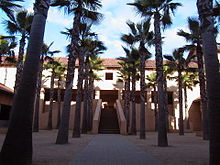

 魂饑餓
魂饑餓
 n y
n y





